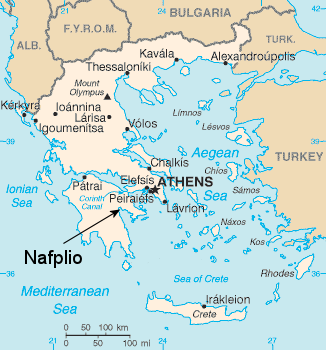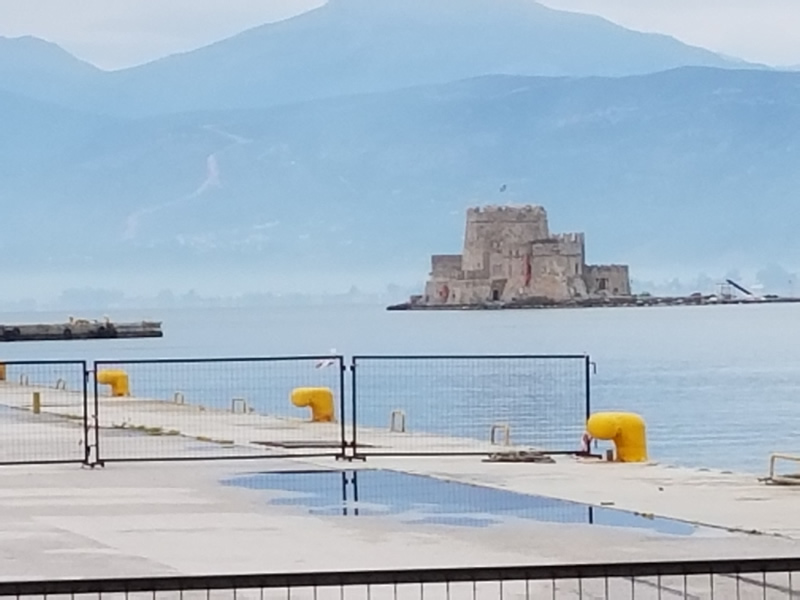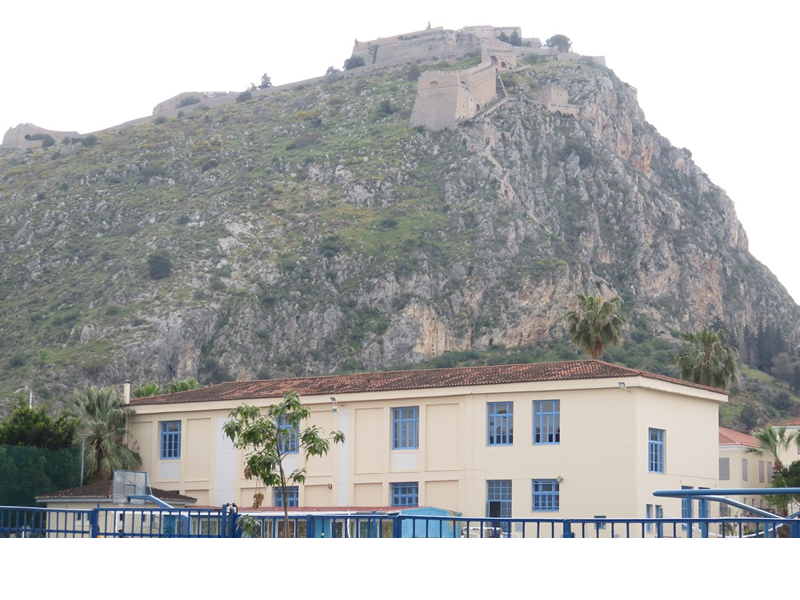Nafplion Greece April 5

Nafplio (Modern Greek: Ναύπλιο) is a seaport town in the Peloponnese in Greece that has expanded up the hillsides near the north end of the Argolic Gulf. The town was an important seaport held under a succession of royal houses in the Middle Ages. We had to anchor in the bay and “tender” (get into one of the lifeboats to get to shore) into the city of Naphlion. In the harbor stands a fortress, named Bourtzi, guarding the city.

Being on a trade route, as expected this area changed hands many times. The “groups” that left the biggest marks on the city itself were the Venetians and the Turks. Both of these came and went at least twice. The city is a resort town, which at this time of year was not too crowded. It was fun to walk the many streets and experience the fragrances in various places. One can tell the buildings that were built by the Venetians because they have balconies, while those by the Turks, afraid that their women might be seen, have no balcony.
Not be outdone by the Fortress in the Harbor, in the city of Nafplio is the Castle of Palmidi which ovelooks the city.

The city is well worth exploring for its many side streets and cafes.
After exploring the city we bussed inland a little through orange groves and past olive trees to the Citadel of Mycenae. It resides on their acropolis (note small a), which although is not the highest mountain around had enough flat space at the top to build the castle. Like this area, the castle passed hands several times, with each conqueror making the walls higher. To access it, you climb a hill, then enter through the Lion Gate, then climb further to the center of the Citadel.

The Mycenaean civilization flourished in the late Bronze Age, from the 15th to the 13th century BCE and extended its influence not only throughout the Peloponnese in Greece but also across the Aegean, in particular, on Crete and the Cycladic islands. They invented the first writing system of the Greeks and built complicated castles in all their strongholds. The one that we visited was the Citadel of Myacenae. One enters through the Lion Gate seen above, then proceeds further up, often holding onto a cable that runs along the path. Views when one finally reaches the top are wonderful, even on a cloudy day.

With the mysterious end of the Mycenaean civilization during the Bronze Age this citadel collapsed around 1200 BCE (possibly through earthquake, invasion or in-fighting) It would be many centuries before Greek culture would finally regain the heights of the late Bronze Age.